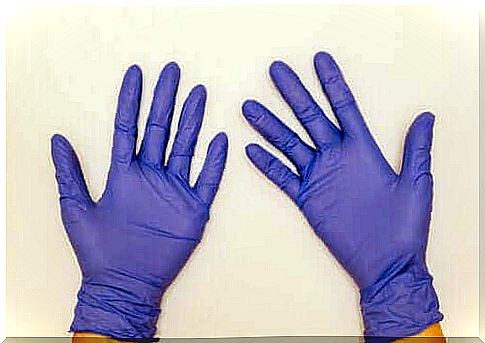Latex Allergy: Causes, Symptoms And Treatment

Some people are allergic to latex, which is made from the juice of the Brazilian rubber tree ( Hevea brasiliensis ). This material is also known as “natural rubber” and many of the products we use every day are made from it.
Latex allergy occurs when an individual’s immune system overreacts to certain proteins contained in this material. This is because many companies use it to make a variety of items that we are in direct contact with on a daily basis.
Estimates show that about four in a hundred people have a latex allergy. For example, about 10 in 100 health care workers are allergic to latex. Latex allergies are particularly difficult for people working in the healthcare industry because many of the tools they use in their work are made of or contain latex.
Symptoms of latex allergy

The most common symptom of latex allergy is itchy skin or hives. It can also cause symptoms such as eye irritation, eye leakage and redness of the nose. In severe cases, it can even lead to anaphylactic shock. This reaction can be life-threatening because the human airways can become swollen and cause breathing difficulties.
Causes and risk factors
Latex is a natural product made up of several components, including proteins. These are the main substances that cause allergies. This is because the small particles released from products made from this material stick to the body when they come in contact with the skin or through the lungs when we breathe.
Some people with latex allergies may not be in direct contact with this material. In these cases, experts believe they have come into contact with someone who made and carried particles on their skin or clothes.
Others also suggest that it may be due to indirect contact, for example, through food that has been handled by people wearing latex gloves.
It is likely that people with allergies will not be born with this problem but will develop it through repeated contact with this material. In fact, symptoms often do not appear until months or years after the first contact with latex.
Which products contain latex?
These products are everywhere and people use them because they are soft and durable.
Products for medical use
This is a common part of medical devices such as:
- Disposable gloves
- Syringes
- Stethoscope or sphygmomanometer
- Respiratory and intravenous cannulas
- Bindings
Some countries have regulations on the use of medical devices that contain latex. Manufacturers must state that they will not come into contact with people with allergies.
Everyday products
Many daily products contain latex or some other natural rubber, such as:
- Balloons
- Elastic bands
- Condoms and contraceptives
- Gloves
- Tires
- Toys
- Handles for objects
In general, these products rarely cause problems, except in very sensitive people.
other products
There is a link between certain food allergies and latex allergies. This is because some foods contain the same allergens as latex. Below are a few of them:
- Avocado
- Celery
- Banana
- Passion fruit
- Kiwi
- Chestnuts
This is important because people who are allergic to latex are also likely to be allergic to these foods or have the potential to cross-react.
Diagnostic tests
Diagnosing latex allergy is not easy. Your doctor will examine your skin and ask questions about your symptoms, as well as look for other information that can help rule out other possible causes of the symptoms.
Your doctor may order a skin reaction test to see if your skin responds to latex proteins. Your doctor will put a small needle on the skin of your forearm or back to inject a small amount of latex.
The doctor interprets the results after the skin has reacted with the sample. A person allergic to latex causes an inflammation in which the doctor used latex. Only an expert should perform this test. An allergist or other physician with experience in skin testing and interpretation of its reactions.
Available treatments

Some medications can reduce symptoms, but it is important to emphasize that latex allergy does not have a specific cure. The best way to avoid allergic reactions to latex is to avoid products that contain it.
Your doctor may prescribe antihistamines or low doses of corticosteroids if the reactions with latex are mild. These medications help control the reaction and alleviate any discomfort.
However, you may inadvertently come into contact with latex products, even if you try to avoid them. You may always want to keep your automatic adrenaline injector with you if you have previously had a severe allergic reaction to these products.
Go to the nearest emergency room for an anaphylactic reaction.
Latex allergy prevention and recommendations
People who are allergic to latex must inform all medical staff, as hospitals use products that contain the most latex. Working in a hospital is one of the most important factors influencing the development of latex allergy.
Another form of contraception is to replace latex products with those made of different materials. There are latex-free gloves, bandages, condoms and toys on the market.
In addition, you should avoid the fruits mentioned above to avoid an allergic reaction due to the proteins contained in these fruits.
Latex allergy is a complex condition
In these cases, timely diagnosis is essential. Unfortunately, the diagnosis is delayed in many patients. It may take up to two years from the onset of the rash to the onset of asthma symptoms.
Some of the key measures include using latex-free products and telling healthcare professionals about latex allergies before the procedure. Therefore, this is the best way to avoid direct or unintentional contact with latex.









